This guide describes the deployment plans for Easy SkyMesh in forests using Meshtastic standard in 3 scenarios:
- Standard deployment plan: This plan is for forests up to 900ha (9 km²). This is used as a mesh cell for larger depployments.
- Large deployment plan: This plan is for forests up to 90,000 ha (900 km²). It comprises of 100 Standard deployments.
- Mega deployment plan: This plan is for forests up to 360,000 ha (3,600 km²). It comprises of 4 Large deployments.
Usecase
This is a typical usecase for Mesh deployment in forests:
- The trees are 10 meters in height. The Mesh clients are carried by personels are at 1 meter in height and mounted by vehiclesat 2 metters in height.
- As the backbone of the mesh network, the mesh routers should be placed above the tree canopy for the best coverage. The broader the more coverage is, the less routers we need to deploy.
- Mesh repeaters could be put in any positions to cover some zones.
- Mesh clients and trackers are carried by personels and vehicles.
Range Assumptions in Forests
This is the typical range in forrest environment. For more precise estimation, signal tests at the sites are recommended.
- Link type
- Router to router
- Router to client / tracker
- Client/tracker to client/tracker
- Typical range
- 2–3 km (clear Line of Sight above tree canopy)
- ~1.5 km (due to foliage + height difference)
- 0.5-1km (unreliable in dense foliage)
1. Standard deployment as a mesh cell
This is the plan for a standard deployment of 3km x 3km areas (900 ha – 9 km²):
- This is the basic mesh cell. Many cells will form bigger deployments.
- Minimum: To put one router in the centre of the the area. Maximum: 4-5 routers every 1.5-2km.
- To put one gateway and one 4G/5G gateway to connect to Easy SkyMesh cloud or Easy SkyMesh on-premise server
- To optionally put repeaters at some locations to serve dead zones. Usually, routers are preffered to repeaters as routers are visible in node list with GPS locations.
The routers, repeaters and gateways must have solar-panels for long term services.
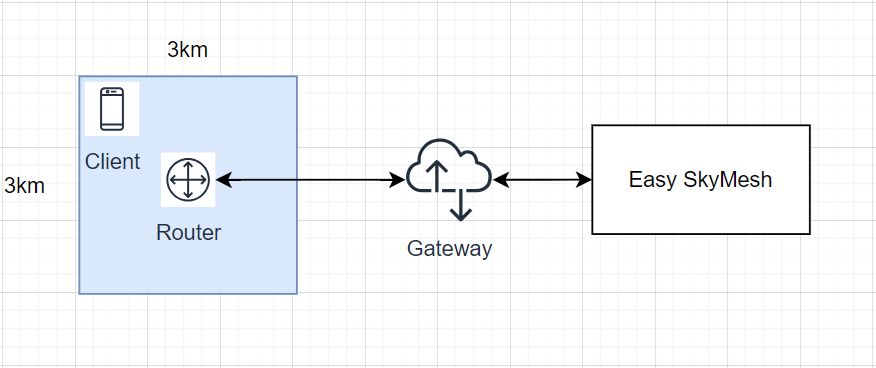
Interconnectivity between mesh cells
To increase the coverage of the mesh network, we can do the following steps:
- Option 1: To put the routers higher to avoid the obstacles.
- Option 2: To connect multiple mesh cells together to provider greater coverage.
For option 2, we connect four mesh cells together:
- A router will automatically forward packets to nearby routers and eventually to Easy Skymesh via mesh gateway.
- We can have more gateways to provide network redundancy to Easy SkyMesh.
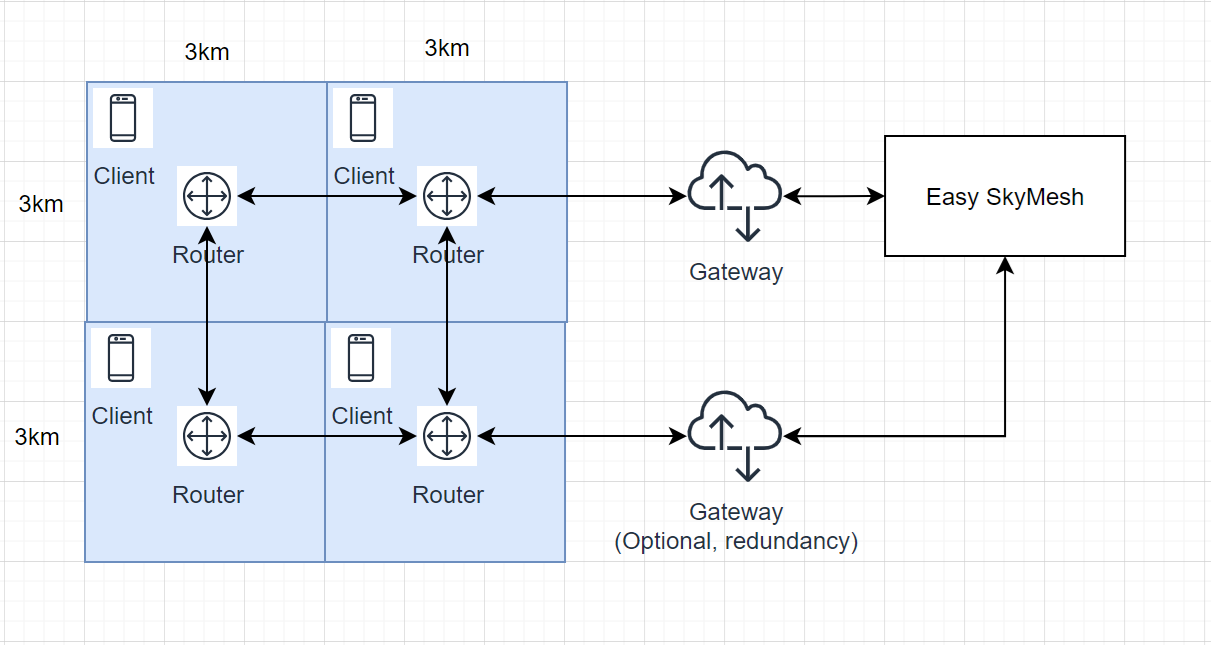
2. Large deployment as 100 Standard deployments
This plan is for forests up to 90,000 ha (900 km²). It comprises of 100 Standard deployments.
- Coverage: 30km x 30km
- One hundred Standard deployments are linked together.
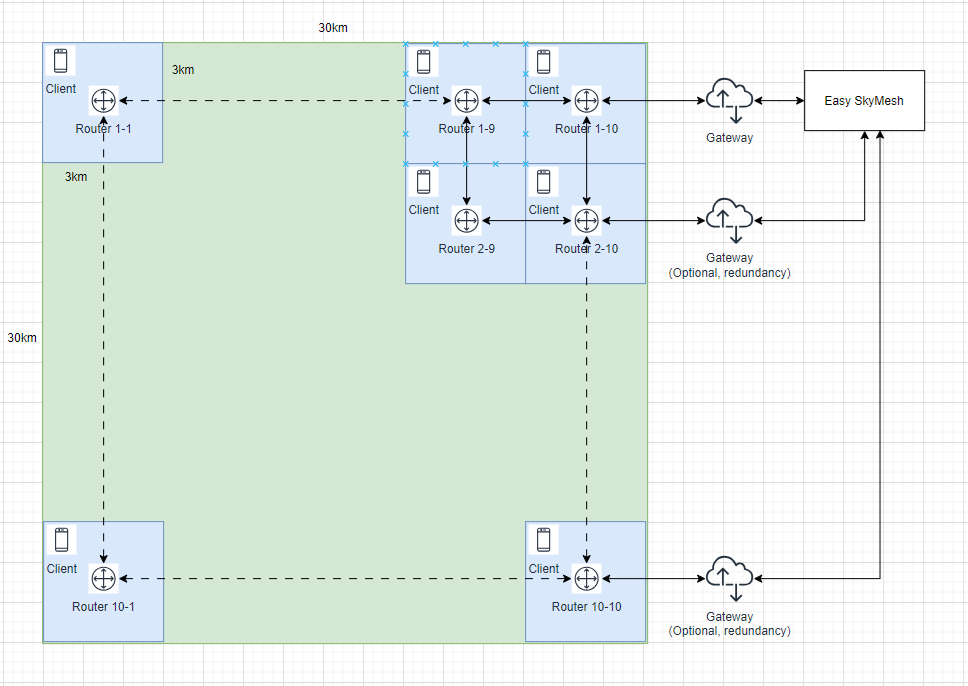
Need help for your projects?
Please chat with us on the red chatbox to get help or discuss about your projects.
Thanks for reaching us.

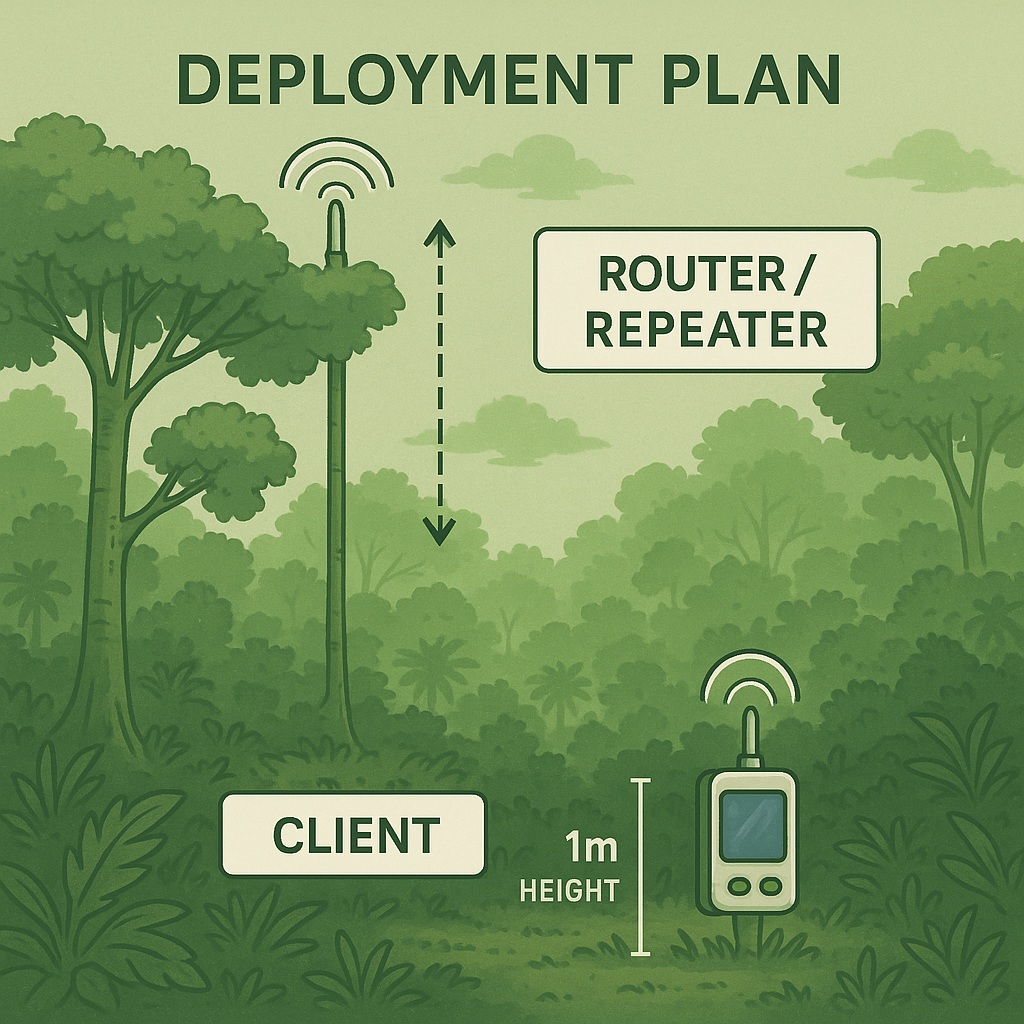
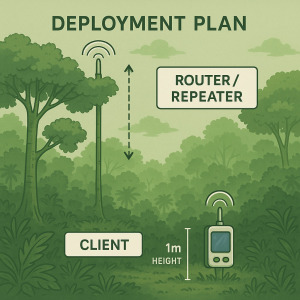
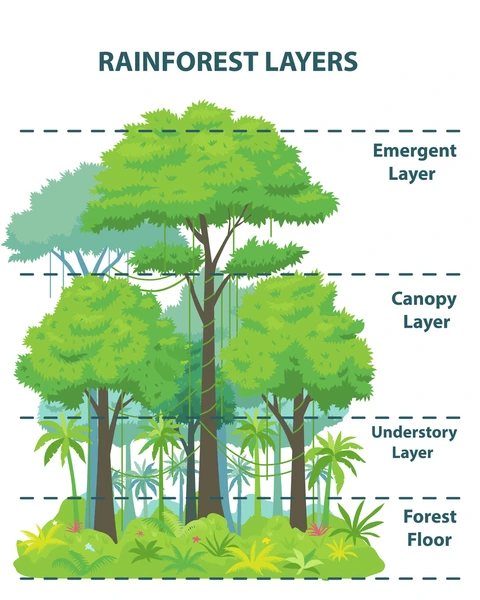
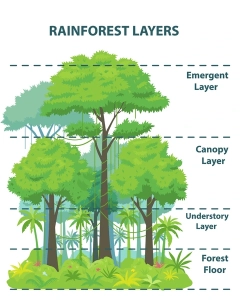
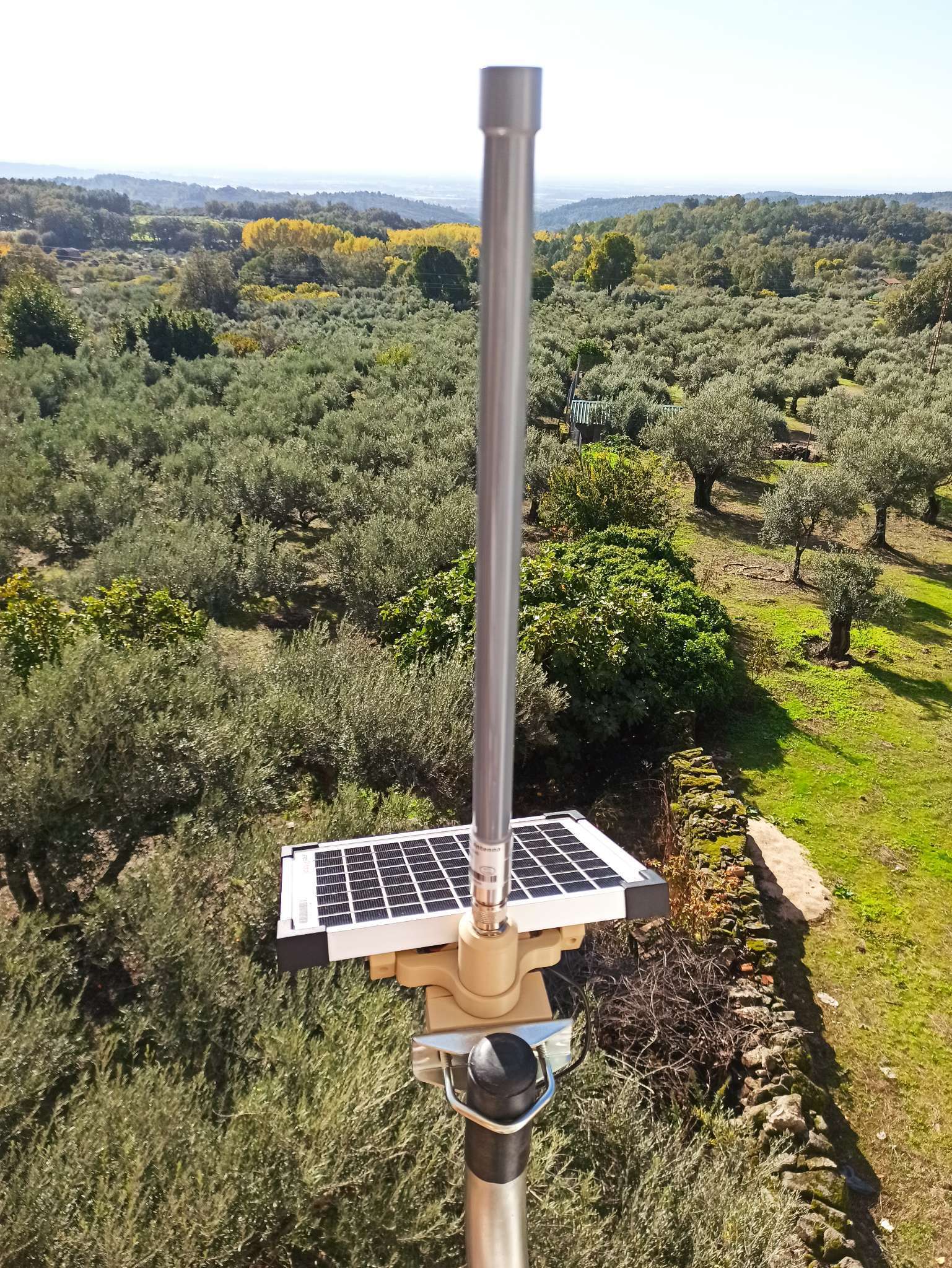
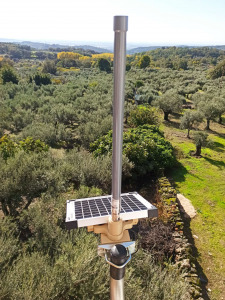

3. Mega deployment as 4 Large deployments
This plan is for forests up to 360,000 ha (3,600 km²). It comprises of 4 Large deployments.